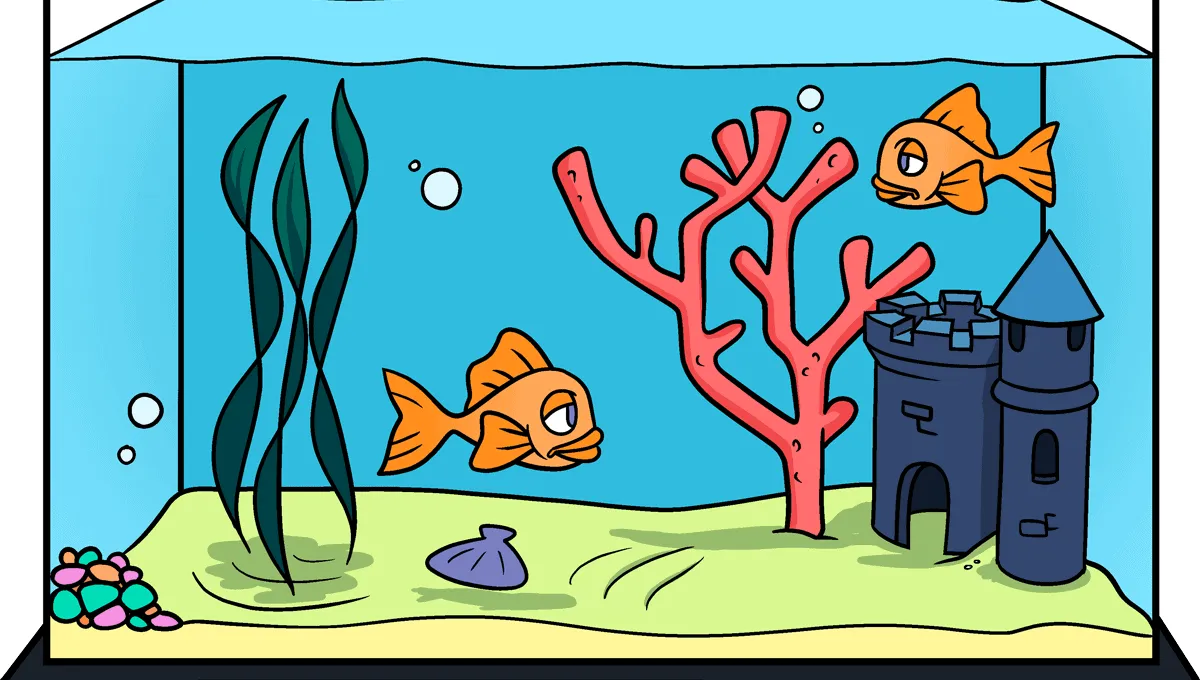

Creating a fish tank is a rewarding hobby and a beautiful addition to any space. Whether you’re a beginner or an experienced enthusiast, United Fish Company is here to guide you through designing and setting up your own captivating fish tank. In this comprehensive guide, we will provide step-by-step instructions and expert tips on how to draw a fish tank that will serve as a thriving aquatic ecosystem for your fish while enhancing the aesthetic appeal of your surroundings.
Choosing the right location for your fish tank is crucial for the well-being of your fish and the overall success of your setup. Consider factors such as natural lighting, room temperature, and accessibility for maintenance.
Decide on the size and shape of your fish tank based on the available space and the types of fish you plan to keep. Standard options include rectangular, square, or cylindrical tanks. Remember that larger tanks are generally more stable and easier to maintain.
Before proceeding with the design, research the fish species you intend to keep. Each species has specific requirements regarding water temperature, pH levels, and compatibility with other fish. Ensure the fish you choose are suitable for your tank size and compatible with one another.
Invest in a high-quality fish tank that suits your design preferences and meets the needs of your fish. Consider factors such as durability, clarity of glass or acrylic, and the presence of built-in filtration systems.
Acquire the necessary equipment for a functional fish tank(How To Draw A Fish Tank), including a filtration system, heater, thermometer, lighting, substrate, and decorations. Choose equipment that is appropriate for your fish species and tank size.
Choose an appropriate substrate, such as gravel or sand, that complements your desired aesthetic and promotes a healthy environment for your fish. Additionally, select decorations like rocks, driftwood, and artificial plants to create a visually appealing and stimulating habitat for your fish.
Thoroughly clean your fish tank and all equipment with water, avoiding using any chemical cleaners. Rinse the tank to remove any debris, dust, or potential contaminants.
Follow the manufacturer’s instructions to install the filtration system. The filter is essential for maintaining water quality and preventing the buildup of harmful substances. Ensure the filter is appropriately sized for your tank.
Place the chosen substrate in your tank, spreading it evenly across the bottom. Add decorations strategically to create hiding spots and a visually pleasing environment. Be cautious not to overcrowd the tank, leaving ample space for the fish to swim freely.
Fill the tank with water at the appropriate temperature and treat it with a de-chlorinator to neutralize harmful chemicals. Gradually fill the tank to prevent displacing the substrate or disturbing the decorations.
Allow the tank(How To Draw A Fish Tank) to cycle before adding fish. This process establishes a stable nitrogen cycle, promoting the growth of beneficial bacteria that convert toxic ammonia into less harmful compounds. Monitor water parameters regularly during this period.
After the tank has cycled, introduce fish gradually to prevent overwhelming the system. Monitor their behaviour and health closely, ensuring they acclimate well to their new environment.
Perform routine maintenance tasks such as checking water parameters, cleaning the tank(How To Draw A Fish Tank) walls and decorations, and replacing water as necessary. Regular water changes are crucial to maintaining water quality and keeping your fish healthy.
Use appropriate test kits to regularly monitor water parameters, including temperature, pH levels, ammonia, nitrite, and nitrate levels. Adjust these parameters as needed to ensure optimal conditions for your fish.
Learn to identify common issues such as cloudy water, algae growth, and fish diseases. Implement appropriate measures to address these problems, such as adjusting feeding habits, improving filtration, or administering appropriate medications under the guidance of a veterinarian.
Designing and setting up a fish tank requires careful planning, research, and attention to detail. By following the step-by-step instructions and expert tips provided by United Fish Company in this comprehensive guide, you can create a stunning fish tank(How To Draw A Fish Tank) that provides a thriving habitat for your fish while enhancing the visual appeal of your space. Remember to prioritize the well-being of your fish by maintaining proper water conditions and regularly monitoring and maintaining your tank. Enjoy the journey of creating your aquatic masterpiece!
Read More:

The Confluence of Culinary Excellence and Casino Trends in the UAE


The Benefits of Hiring a Professional Clown for Children’s Parties


Near-Expiry Pantry & Sweets in Dubai: Big Savings on Everyday Essentials

كيف يمكنني اللعب في كازينو اون لاين بأمان؟

Ford Raptor 2025 in the UAE: Pricing, Power, and Desert Ready Capability

Behind Every Online Food Order in Dubai Is a Strong IT Support


Recent Blogs